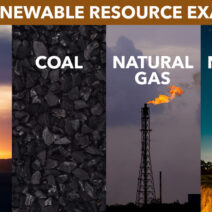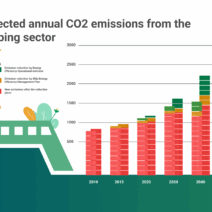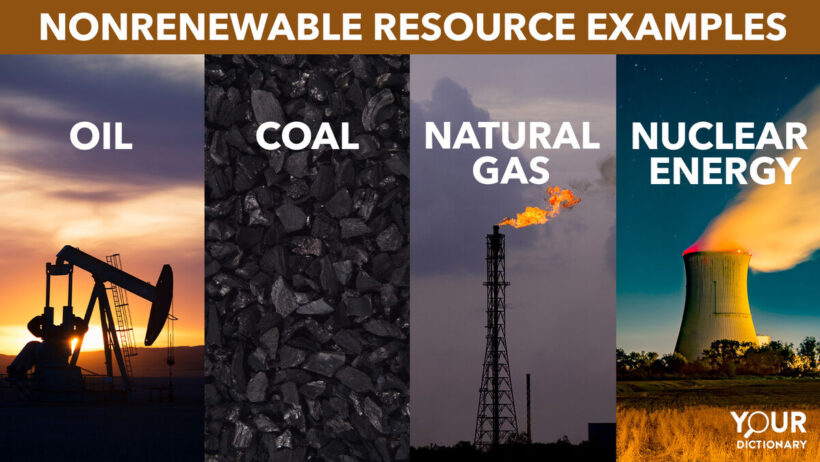Nonrenewable energy resources, such as coal, oil, and natural gas, have powered our civilization for over a century. Their extraction and utilization have significantly propelled economic growth, yet they present a paradoxical challenge. As finite resources, their depletion poses substantial implications for future generations and environmental sustainability. Thus, a pressing question emerges: How can we conserve these precious nonrenewable resources to extend their availability and mitigate ecological damage? Here, we will explore three pivotal strategies for conserving nonrenewable energy resources while emphasizing the importance of responsible consumption.
The first and perhaps most impactful method to conserve nonrenewable energy resources is through energy efficiency. This concept revolves around maximizing the output of energy used while minimizing waste. For instance, the implementation of energy-efficient appliances, such as LED lighting and high-efficiency HVAC systems, can drastically reduce energy consumption in households and commercial buildings. But does it surprise you to learn that merely switching to energy-efficient products can decrease energy use by up to 30%? Moreover, these advancements are not limited to consumer goods. Industrial sectors can adopt cutting-edge technologies like combined heat and power systems, which improve efficiency in converting fuel into usable energy, thus reducing dependence on nonrenewable resources.
In addition, retrofitting existing buildings for energy efficiency can significantly curtail energy demands. Insulation improvements, double-glazed windows, and smart thermostats are transformations that secure energy savings with relatively low upfront costs. The challenge lies in enlightening the consumer base about their responsibility in adopting these technologies. Education and awareness campaigns can galvanize communities, illustrating that energy conservation does not necessitate a dramatic lifestyle upheaval but simply a shift in habitual choices.
The second avenue to conserve nonrenewable energy resources entails embracing alternative energy sources. The diversification of energy portfolios is not merely a trendy catchphrase; it represents an essential evolution in how we source energy. By integrating renewables—such as solar, wind, and hydroelectric power—societies can decrease their reliance on depleting fossil fuels. Mathematical modeling suggests that if global energy production were to transition at an accelerated pace towards renewables, we could significantly reduce the carbon footprint associated with traditional energy generation.
However, this leads us to an intriguing challenge: how can we incentivize such a transformation? Government subsidies and tax incentives for renewable energy projects encourage businesses and individuals to invest in green technologies. Furthermore, advancements in battery storage technologies address the intermittency issues inherent in renewable sources. This way, we can optimize energy production and supply while leveraging nonrenewable resources in a more judicious manner. As collective awareness about climate change expands, societal demand for greener energy solutions will likely bolster efforts to diminish our reliance on nonrenewable resources.
Lastly, behavioral change is pivotal to the conservation of nonrenewable energy resources. The phrase “reduce, reuse, recycle” encapsulates a mindset aimed at decreasing overall consumption. The challenge here is fostering a cultural shift towards responsible energy use. Simple actions, such as carpooling, public transportation, or adopting a more plant-based diet, can significantly reduce individual carbon footprints. Moreover, conscious consumerism, where individuals prioritize purchasing products from companies committed to sustainable practices, contributes to a collective effort in preserving nonrenewable resources.
Educational initiatives that foster understanding of energy consumption can catalyze this behavioral change. Why not encourage households to conduct annual energy audits to identify inefficiencies? This proactive approach instills a sense of accountability among consumers, challenging them to assess and minimize their energy expenditures. Even small modifications—like unplugging electronic devices when not in use or reducing unnecessary heating and cooling—can lead to substantial energy savings over time.
In conclusion, conserving nonrenewable energy resources is not merely an individual endeavor; it necessitates a collaborative approach that engages governments, industries, and communities. By enhancing energy efficiency, embracing alternative energy sources, and promoting behavioral change, we can strive towards a balanced coexistence with our planet’s finite resources. As stewards of the environment, the onus lies upon us to champion these initiatives and secure a sustainable future for generations to come. What challenges will arise as we embrace these strategies? The answer lies in our willingness to innovate, adapt, and unite in the face of an uncertain energy future, reminding us all of the vital importance of conserving what is irreplaceable.






